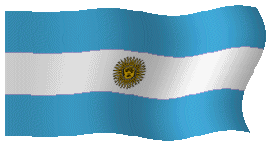
B"H
Jewish  Tours
Tours
 Buenos Aires, Argentina
Buenos Aires, Argentina
ARGENTINA, South American Federal Republic, general population (2004) 39,150,000; Jewish population 190,000.
During the first stage of Jewish settlement in Argentina up to 1914, there were four main sectors in Jewish society: (1) farmers – Jewish Colonization Association (ICA) settlers and permanently hired or seasonal laborers; (2) artisans in all branches – either self-employed, employed, or apprenticed; (3) peddlers selling goods on the installment plan (and therefore called "Cuenteniks"); and (4) shopkeepers dealing in supplying goods to meet daily needs. In addition to these groups were individuals who were among the first industrialists (in textiles, furniture, and in the extraction of tannin from the quebracho tree) and high officials, including managing directors, of large grain-export companies. In 1909 there were 90 Jews in Buenos Aires belonging to the liberal professions. Most of them were in the field of medicine and of the 60 students attending the university, 41 studied medicine or pharmacy.
Economic and professional development enabled many peddlers to become merchants, agricultural laborers to become farmers, and employed artisans to become independent. The occupations vacated by veteran settlers as they rose on the ladder of economic prosperity and social advancement were constantly filled by new waves of immigrants that continued to arrive until the outbreak of World War II. While the numbers of workers did not decrease to a great extent, the number of established merchants increased and a class of professional men developed. In 1934 the ICA director in Buenos Aires, Simon Weill, basing his report on figures submitted to ICA by towns throughout the country, estimated that 1,175 Jews were practicing in various branches of medicine and pharmacy, 190 in engineering and law, and many were writers, artists, and university lecturers.
During the period from 1918 to 1939, trade unions and economic associations were also formed. Carpenters, who organized a general strike in Jewish workshops in 1916, needle workers, bakers, and others maintained their own trade unions for a while, and in 1934 Jewish merchants and employers united under the Cámara Comercial e Industrial Israelita. The "Cuenteniks" formed two cooperatives that became important financial instruments. In urban centers and in some of the Jewish agricultural colonies cooperative credit banks flourished. In July 1940 the Asociación de Industriales de la Madera y del Hierro was established, incorporating the Jewish industrialists in the field of wood and iron furniture products.
|
Visite nuestro sitio/Visit our home page: |